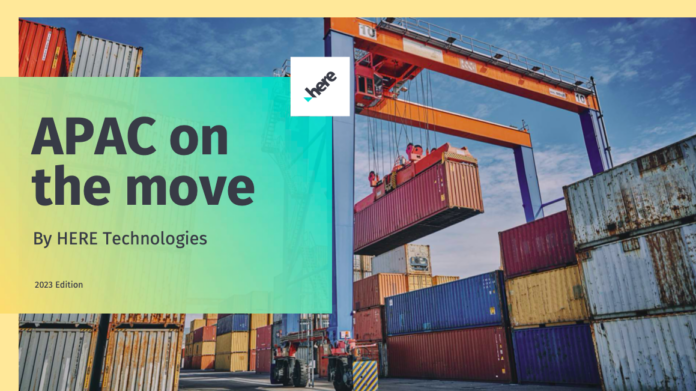Logistics companies in Singapore cited technology implementation challenges as their biggest barrier to achieving real-time end-to-end supply chain visibility, despite the motivations to improve financial benefits, according to a study published by HERE Technologies.
This inaugural study consists of market research data and analysis from March 2023, based on responses from 1,300 players within the transport and logistics industry across Australia, Chinese Taipei, India, Indonesia, Japan, Malaysia, Singapore, and Thailand.
Findings of the HERE Technologies APAC On The Move 2023 report show that technology partnerships and implementations are big challenges.
Over a fifth (22%) of firms surveyed in Singapore have cited the challenge of justifying return of investments as their biggest barrier to technology implementation. Costs (19%) and the potential disruption to existing processes and services (18%) are also concerns that ranked high.
High implementation costs (18%), software integration challenges with existing infrastructure (17%), and high connectivity costs (15%) are the main barriers to adopting logistics assets tracking and shipment/cargo monitoring solutions.
The study also found that Singapore logistics firms still rely on manual tracking and 43% of them are using asset tracking and shipment monitoring software in combination with manual inputs to track assets, shipment, and cargo.
Further, financial gains triumph all. The need to improve capacity planning, trend visibility, and forecasting is ranked the top reason (49%) for local logistics firms to purchase logistics asset tracking solutions.
In the retail and logistics industry, leading companies are fusing services with strategic partners to capitalise on changing consumer behaviour and demands.
Logistics players in Singapore also want to be able to gain competitive advantage in the market (43%) and to increase revenue (41%) when introducing logistics asset tracking solutions.
In addition, Singapore logistics industry eyes future technologies for growth. IoT applications for warehouse management (22%), order management (22%), and inventory management (21%) are the most popular among logistics companies in Singapore.
Looking ahead, almost a third of logistics companies in Singapore are planning to invest in autonomous vehicles (30%), drones (29%), and IoT (28%).
These technologies have been identified by the logistics sector to improve their technology capabilities (44%), improve operational efficiency (43%), and gain competitive edge in the sector (41%).
William Strugger, senior director for global market intelligence at HERE Technologies, said the findings speaks to the need for logistics providers to engage professional services to speed the implementation of in-house software development or off-the-shelf turnkey software, or offload the entire effort to system integrators or location consulting boutiques to develop a bespoke solution.
“Visibility is essential in the supply chain business, and location technology is the key ingredient for building true visibility for businesses and their end customers,” said Jason Jameson, SVP and general manager for APAC at HERE Technologies.
“Even though Singapore is known for its secure, highly efficient logistics and supply chain management hub, the reality is that there is further opportunity to leverage technologies, which will create even more value to strengthen the Singapore logistics hub proposition,” said Jameson.
















